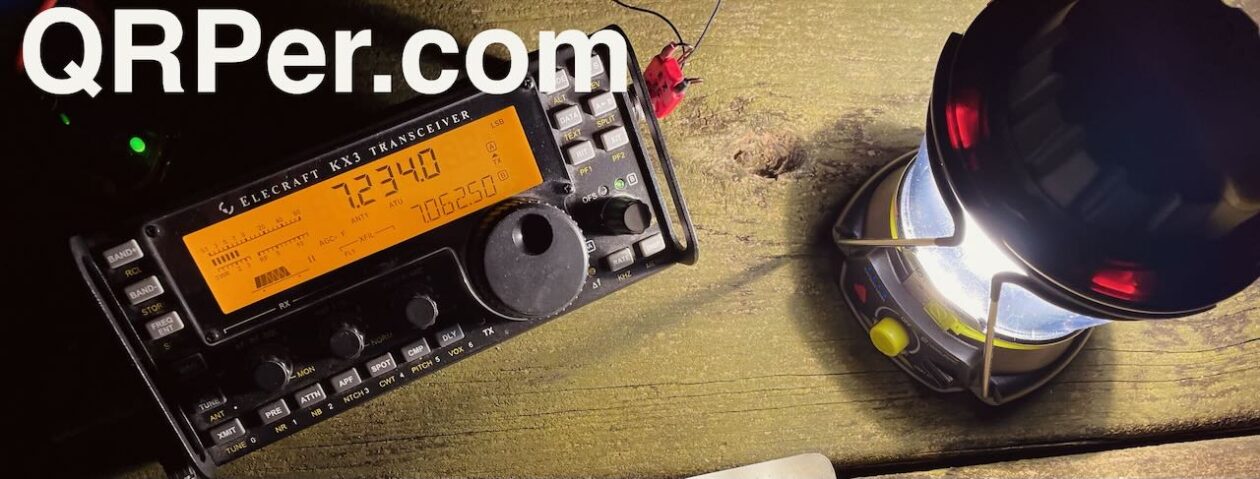In the chaos of the past two months, I managed to post a few field reports out of chronological order. I’m probably the only one who notices—these aren’t sequential stories, after all—but since I was there for each activation, it feels odd when the timeline’s off.
Case in point: you might recall this recent post where I shared how I finally landed an Elecraft K1 field-portable transceiver. I’d been hunting for a K1 for years, so I was thrilled when this one popped up locally in North Carolina.
 Last month, I published this field report where I paired the K1 with my AX1 antenna for a low-profile (but high-performance) activation in Pisgah National Forest.
Last month, I published this field report where I paired the K1 with my AX1 antenna for a low-profile (but high-performance) activation in Pisgah National Forest.
But here’s the thing: that was actually my second activation with the venerable K1. The first one? It took place along the Blue Ridge Parkway on February 24, 2025.
Taking the K1 to the Field!
 It’s always exciting to take a new radio to the field—especially one I’d been chasing for so long. I purchased the K1 back in August of last year. As soon as it arrived, I tested it and realized it was in serious need of alignment.
It’s always exciting to take a new radio to the field—especially one I’d been chasing for so long. I purchased the K1 back in August of last year. As soon as it arrived, I tested it and realized it was in serious need of alignment.
I brought it over to my friend Vlado (N3CZ), hoping to use his signal generator to sort it out. Unfortunately, we didn’t have time that day, so I left the rig at his QTH. Then Hurricane Helene hit, and… well, suddenly it was 2025.
We finally got around to the alignment in February. As soon as it was dialed in, I hit the field.
Blue Ridge Parkway (US-3378)
 I made my way to a familiar spot along the Blue Ridge Parkway—the Folk Art Center—and set up the K1.
I made my way to a familiar spot along the Blue Ridge Parkway—the Folk Art Center—and set up the K1.
Mine is a four-bander (40, 30, 20, and 15 meters) with both the optional internal ATU and AA battery pack. To give the internal tuner a little workout, I paired it with my trusty Tufteln 9:1 End-Fed Random Wire antenna.
Once deployed, I hit the ATU button, and the K1 quickly found a solid 1:1 match. With logs at the ready, it was time to hit the airwaves!
Gear
 Note: All Amazon, CW Morse, ABR, Chelegance, eBay, and Radioddity links are affiliate links that support QRPer.com at no cost to you.
Note: All Amazon, CW Morse, ABR, Chelegance, eBay, and Radioddity links are affiliate links that support QRPer.com at no cost to you.
Radio
- Elecraft K1 (four band version with optional ATU and internal AA battery pack)
Key
- UMPP-1 Paddles by GM0EUL
- Key cable: Cable Matters 2-Pack Gold-Plated Retractable Aux Cable – 2.5 Feet
Antenna
- TufteIn EFRW QRP Antenna Long Wire
- ABR Industries 25’ RG-316 cable assembly with three in-line ferrites (Use Coupon Code ABR10QRPER for 10% Discount!)
Pack and Case
- Vintage Swiss Army Rucksack
- Ape Case Padded Camera Insert
Logging Supplies
Battery
Camera/Audio Gear
- DJI OSMO 4 action camera with Joby Telepod Sport Tripod
- DJI Wireless Microphones
On The Air
 I started calling CQ POTA on 20 meters, thinking I’d eventually migrate to 30 meters if things slowed down. Continue reading First Field Outing with My New-to-Me Elecraft K1!
I started calling CQ POTA on 20 meters, thinking I’d eventually migrate to 30 meters if things slowed down. Continue reading First Field Outing with My New-to-Me Elecraft K1!













































































